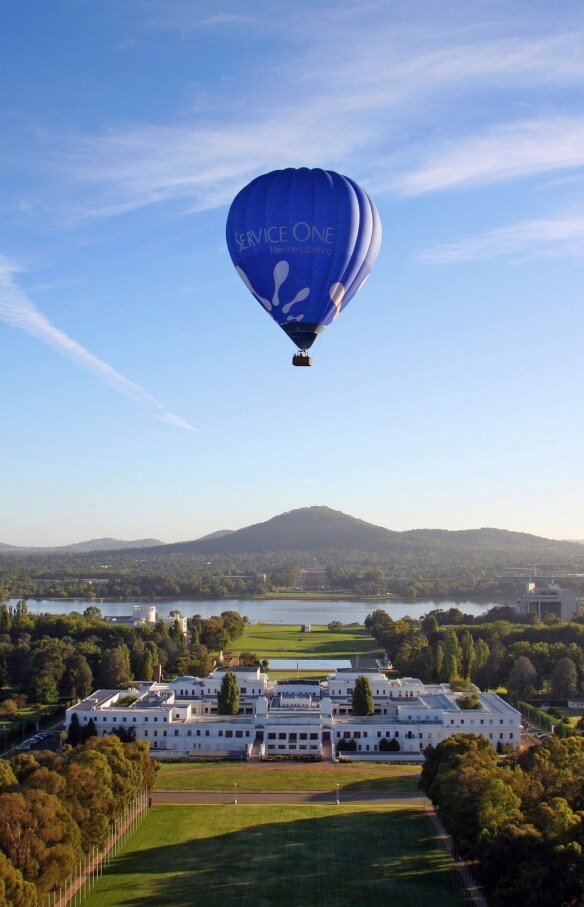Daylight saving begins at 2am, Eastern Standard Time, on the first Sunday in October and ends at 3am Eastern Daylight Saving Time on the first Sunday in April. During this time Canberra moves to Australian Eastern Daylight Time (AEDT), UTC +11.

Weather in Canberra
Find information on temperature, rainfall and seasonal activities to help plan your holiday in Canberra.
What is the weather and temperature like in Canberra?
With its warm, dry summers and crisp, cool winters, Australia’s capital will draw you in no matter when you choose to visit. Plan ahead with our information on temperature and rainfall.
Summer (December – February)
During summer in Canberra, average temperatures range from 12.6 - 27°C (54.7 - 80.6°F), with little humidity and balmy nights. January is the hottest month, when temperatures rise to 13.2 - 28°C (55.7 - 82.4°F), and visitors can make the most of Canberra's vast outdoor spaces.
Autumn (March – May)
In autumn temperatures drop to an average of 6.8 - 20°C (44.2 - 68°F) with mild days and cool nights. The city’s parks and gardens put on a beautiful display of colour.
Winter (June – August)
Winter in Canberra is cold with average temperatures between 1 - 12°C (33.8 - 53.6°F), dropping below 0°C at night. Snow falls in the nearby Australian Alps, making Canberra a great stopover on your journey to the slopes.
Spring (September – November)
During spring expect fresh mornings and brisk nights with average temperatures between 6 - 19°C (42.8 - 66.2°F). November is the wettest month (64.5 mm / 2.5 inches), however the city receives relatively low rainfall compared to the rest of the country.
Frequently asked questions about the weather in Canberra
Seasonal weather in Canberra
SUMMER
| Weather Categories | Dec | Jan | Feb |
|---|---|---|---|
| 26.1 79 | 28 82 | 27.1 81 | |
| 11.4 53 | 13.2 56 | 13.1 56 | |
| 54 | 59 | 56 | |
| 8 | 7 | 7 |
AUTUMN
| Weather Categories | Mar | Apr | May |
|---|---|---|---|
| 24.5 76 | 20 68 | 15.6 60 | |
| 10.7 51 | 6.7 44 | 3.2 38 | |
| 51 | 46 | 44 | |
| 7 | 7 | 8 |
WINTER
| Weather Categories | Jun | Jul | Aug |
|---|---|---|---|
| 12.3 54 | 11.4 53 | 13 55 | |
| 1 34 | -0.1 32 | 1 34 | |
| 40 | 41 | 46 | |
| 10 | 11 | 11 |
SPRING
| Weather Categories | Sep | Oct | Nov |
|---|---|---|---|
| 16.2 61 | 19.4 67 | 22.7 73 | |
| 3.3 38 | 6.1 43 | 8.8 48 | |
| 52 | 62 | 64 | |
| 10 | 10 | 10 |































































































































